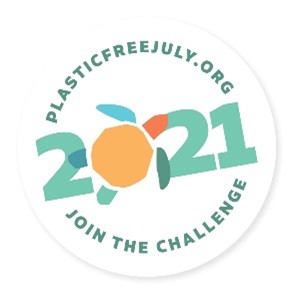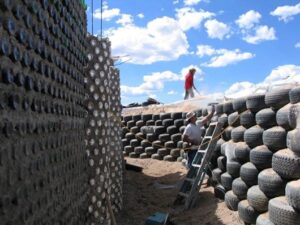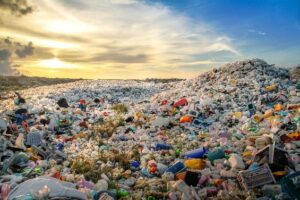Diving Into Our Plastic Consumption
Rising construction costs and the high volume of demand for new construction have been the hot button issue for everyone in the industry. How the current cost of wood compares to where we were several years ago. What can we do to make new construction viable with these restrictions in place?
As important as the monetary cost is to our industry and those on the peripheral, there is another crisis that is happening below the surface. What you may not find in these articles is that the use of plastics is accelerating as we as a race try to taper our dependency on fossil fuels.

Plastic Free July is a global movement that helps millions of people be part of the solution to plastic pollution. Although July is over it’s not too late to “join the challenge,” do your part to make a difference. To celebrate this initiative and to help curb the use of plastics in a responsible manner, let’s take a deeper dive into plastic consumption and ways of reusing it. It is up to the Architecture and Construction industry to make a change in our vision to aid in these efforts.
…according to a report from 2019 they have recorded trace samples of plastic in the rainwater collected in 8 data sites throughout the Rocky Mountain front range.
Effects of Plastic Waste Today
Plastics as we know are a valuable material due to their resiliency, cost effectiveness and ease of production. In some instances, there is simply no alternative. All too often though there are plenty of options that are overlooked because of lobbying and the will to save pennies. Single use plastics are not only a huge percentage of new plastic production, but they are one of the main culprits in the pollution of oceans. These pollutants are no longer just an issue for marine life.
Some of us have experienced the plastic pollution firsthand while visiting the beach or marine locale in either the shape of plastic straws, caps for soda or small fragments of plastic. Now though we are finding out that the problem is not isolated to the costal locations but even here in Colorado. The Rocky Mountains are the birthplace for 55% of the United States drinking water1. So it should come as a huge alarm to find out that, according to the USGS it is literally “raining plastic2.” That is right, according to a report from 2019 they have recorded trace samples of plastic in the rainwater collected in 8 data sites throughout the Rocky Mountain front range.
Creative Ways to Recycle Plastic
Plastics make up approximately 12+% of Municipal Solid Waste which may not sound like a huge percentage, but that number is actually up from 8% in 19903. In fact the plastics industry has increased its production over the last 30 years by more than 10x.
According to Blaine Brownell of Architect Magazine “The demand [for petroleum used in plastics] will even outstrip the original use of petroleum.” Meaning that over the coming decades more fossil fuels will be used for plastics than for cars, trucks and planes combined4. By contrast when plastic is looked at in the Municipal Solid Waste metric for recycling is makes up less than 5% of all materials recycled. For decades, the United States has relied on Asia (namely China) as a destination for it’s plastic recycling, shipping millions of tons yearly. In 2018 China announced it would no longer buy most of the plastic waste from places like the U.S. Plastics are something that we can no longer make someone else’s problem.
What can we do?
When they ask if you want a straw with your drink and you think ”it’s only one straw,” think if that question was asked to 7.6 billion people?
Although I do not live a completely plastic free lifestyle, I do try to practice a mindful consumption. Saying no to single use plastics is the first step in personal reduction, but we need more. The construction industry is one of the top producers and disposers of plastic trash. What ways can the construction industry implement to reduce the trends?
First Architecture and Construction can reduce the use of plastic in packaging in anyway possible. Using materials that are easily recyclable, renewable and limiting waste due to the cutting and disposal of raw materials. Using modular systems and methods also allow for the most efficient uses of materials with minimal waste.
Then the use of upcycling our plastic waste as a building material can help push some of the unwanted recyclable plastic to good use. There are many building products that are easily available today that use recycled plastic as a major component of the composition. For instance you may see products like roofing tiles, PVC windows, insulation, fence and deck materials and carpet to name a few.
It is of upmost importance that the industry demand the use of recycled plastics wherever feasible to help minimize the effects of single use plastics. Although many plastics are labelled as non-recyclable on a polymer level they are technically 100% recyclable5. The properties that make plastic so universally used as a material make it attractive as a building material. The effort must be to use as much if not all existing plastics to create sustainable/recyclable products for the future.
Some other innovative ways that recycled plastic is being used today is in plastic asphalt or Plashalt. In this application bitumen, which is typically the binder, is replaced by recycled plastic. An added bonus is that bitumen is another petroleum product.
Many companies are creating LEGO like building blocks out of recycled plastic. These blocks can also be quite cost effective and could allow for implementation of kits to allow for assembly by less than highly skilled labor.

Earthships, which are passive solar earth shelters are made from natural and recycled materials, utilize recycled plastic for a variety of purposes. Earthships typically use approximately 60% recycled materials (including plastic).
These are only a few examples of how we as an industry are utilizing plastic as a full life-cycle raw material. The possibilities are truly endless.
Let’s Make This Our Turning Point
The Architecture and Construction industry have a rare opportunity to be at the forefront of one of the biggest turning points in our history.
As individuals, I hope we all take the first step by joining in the Plastic Free July campaign to minimize our use of single use plastics and reduce the creation of new plastics. As designers and builders, I hope we continue to push these recycling technologies to help control the footprint of plastics that do exist. With all of us working together we can make a difference. Just remember when they ask if you want a straw with your drink and you think ”it’s only one straw,” think if that question was asked to 7.6 billion people?
For more ideas on building sustainably please read take a look at our LEED, Sustainability articles which includes these two about green building initiatives.
- Denver, Colorado- Green Building Ordinance – EVstudio
- Top Ten Ways to Reduce Energy Demand in a Net Zero Building – EVstudio
References
- Following Water in the Rocky Mountains | USDA
- den19-0042_poster-MKv3 (usgs.gov)
- National Overview: Facts and Figures on Materials, Wastes and Recycling | Facts and Figures about Materials, Waste and Recycling | US EPA
- The Plastic Plight | Architect Magazine
- Why plastic waste is an ideal building material – BBC Future












